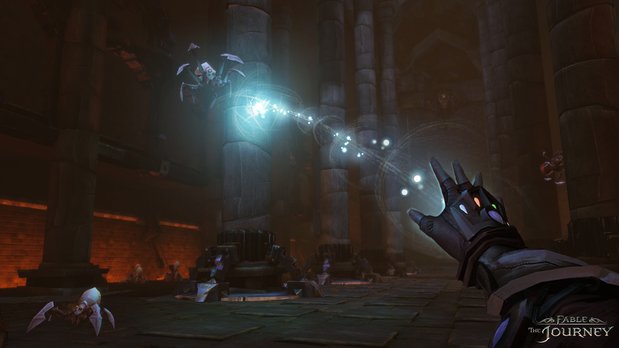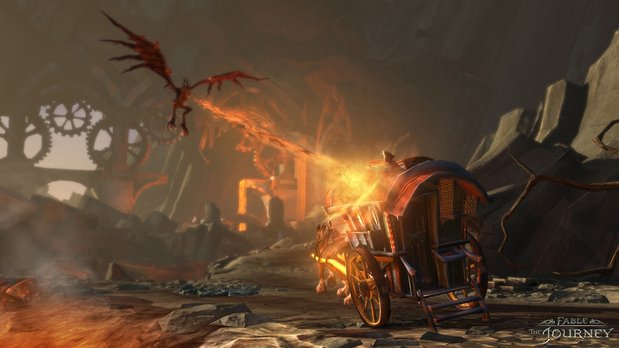Fable: The Journey preview - Is it really better with Kinect?
It's all about the destination
The reaction to Lionhead's Kinect-powered Fable: The Journey at last year's E3 was anything but optimistic. The section showed off made it look like an on-rails racing game, and a gimmicky one at that. This year, however, we had a chance to see more of the game and to try it out for ourselves, and though it's not going to turn a Kinect-hater into a zealot, it appears to be quite a bit better than we originally anticipated.

First, we should get over the obligatory caveat: Fable: The Journey is going to be a much, much more linear adventure than the core games in the series. It's not a sprawling RPG, and it's not an open-world action game. That said, it's far more than just riding around on a wagon. Well, alright, that's a part of it, and it's actually the first thing we saw this year, too, but the destination is more important than the journey, anyway.
And the destination, in the demo we played, was a dungeon filled with undead. Earlier we met up with Theresa, the series' blind seeress, who stumbled along with us and taught our character magical abilities. Magic is actually the focus of the game - while other Fable games have had the character juggling ranged, melee, and magic, but this game cuts out the first two and focuses on the third specifically to make for a better Kinect experience. After playing Kinect and Move games that required us to attempt to swing a sword for the entire game, we can't help but feel like they're on to something.

Using these magical powers, we were able to lunge different spells at the screen. An electrical blast was never more than a gesture away, and yelling "Fireball!" at the Kinect or shaking our hand would light the orb ablaze. It was fun, but not nearly as fun as using the other magical ability we had access to - a magical lasso that holds enemies in place or tears them apart.
Skeletons, for instance, could be ripped limb for limb, turning them into useless husks that literally could do nothing but attempt to shamble over and kick at us. With a flick of the wrist we'd pop the skeleton's head off, sending it flying into the background as the skeleton swung around. It was hilariously Fable, and felt better than a majority of Kinect games. It was still a little inaccurate, as Kinect games often are, but it really wasn't an issue. We know that the more time we spend playing it the more we'll get a grasp of the controls. Plus, missing with a spell wasn't actually too bad, since we could always swing our hand over and turn the projectile back towards the enemy, raining fire down on our foes even when we tossed the spell in the wrong direction.

It's also worth noting how good it looked. In order to focus making sure the Kinect functionality worked perfectly, the developers opted to build the world using the Unreal engine instead of trying to get everything working in the one that powered the last games. Beyond simply looking better, it meant everything needed to be built from scratch, making The Journey one of the best looking fantasy games we've seen on the Xbox 360. Near the end of the demo when we battled a giant troll (Fable 2 fans likely know the one we're talking about) we were amazed at how vibrant and stylized the beast was. We almost felt bad lunging magical spikes into its face until it fell down and died.
It's easy to look at Fable: The Journey as a cash-in or silly spin-off, but after getting some hands-on time we walked away actually anticipating it when it comes out later this year.
Weekly digests, tales from the communities you love, and more
Hollander Cooper was the Lead Features Editor of GamesRadar+ between 2011 and 2014. After that lengthy stint managing GR's editorial calendar he moved behind the curtain and into the video game industry itself, working as social media manager for EA and as a communications lead at Riot Games. Hollander is currently stationed at Apple as an organic social lead for the App Store and Apple Arcade.



